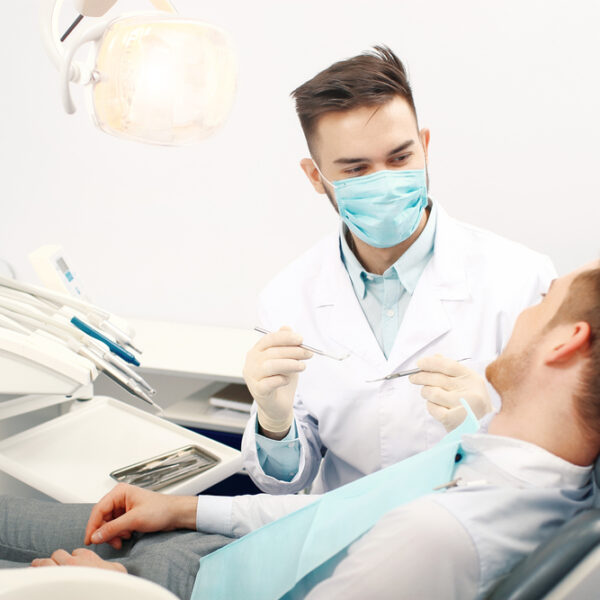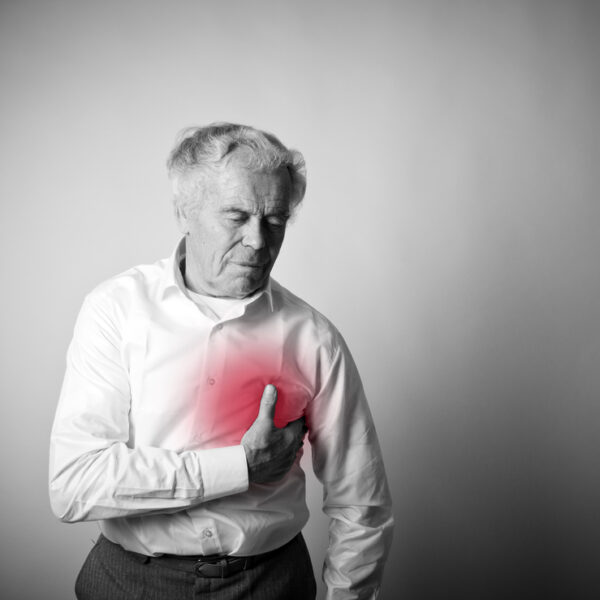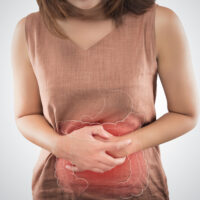Popular Articles
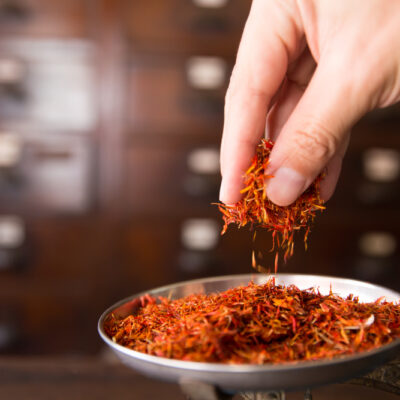
An Overview Of Cla Safflower Oil
An overview of CLA safflower oil CLA stands for conjugated linoleic acid. It is high in good fats, i.e., monounsaturated fats and polyunsaturated fats. According to the National Institutes of Health, typically, CLA is found in foods like beef and dairy. However, it can also be found in small quantities in vegetable oils. Safflower oil is a oil produced from the seeds of a safflower plant; thus, it is a vegetable oil. Safflower plant is about 30 to 150 cm in height and each branch of the plant has about one to five flower heads with 15-20 seeds per head from which the oil is extracted. The plant is found in Kazakhstan as well as India, the USA, Mexico, and Argentina. Below is some information about CLA safflower oil. What are the advantages of using CLA safflower oil? The CLA safflower oil is a rich source of unsaturated fatty acids, namely, polyunsaturated fats and monounsaturated fats. These fats, commonly known as good fats, are required by the body to function well. The CLA safflower oil helps in improving memory and aids hormone regulation. This oil allows the body to absorb fat-soluble vitamins like vitamin K, E, D, and A. CLA safflower oil reduces inflammation in the body and also improves general health. It is a good way to regulate blood sugar levels in the body. Regular intake of CLA safflower oil improves blood cholesterol levels, thereby, reducing the chances of any kind of heart diseases. It contains vitamin E, which is great for skin issues like dry skin or even inflamed skin. However, you must perform a patch test before applying the oil all over the skin. How do you use CLA safflower oil in diet? The moderate use of safflower oil in your food will improve your metabolic rate, thereby, reducing your weight. The proportion of safflower oil intake would be dependent on weight-loss calorie requirement. For instance, a woman who needs to have 1200 calories daily would need 4 teaspoons of the CLA safflower oil. Men who are on a diet and need to consume 1600 calories would need 5 teaspoons of it. What are the side effects of CLA safflower oil? Most often people do not face any side effects from this oil if it is consumed or applied in recommended proportions. CLA safflower oil thins the blood so it could slow down clotting and could increase the chances of bleeding for those who have bleeding disorders or are undergoing some sort of surgery. People allergic to ragweed or pollen should not consume this oil as it could lead to an allergic reaction. Pregnant women should avoid it. Which are the best safflower oils of the year? As per CLA safflower oil reviews, the following brands have made the list of favorites among consumers this year: Renewalize Organic Safflower Oil – This is a USDA-certified brand and it is high in oleic acid. Renewalize Organic Safflower Oil is extracted using the cold pressed method that allows it to have a high amount of oleic acid, which is great for hair growth. Hollywood Safflower Oil – This is a great oil for cooking. It is the best when it comes to light heat cooking. The Hollywood Safflower Oil is available in a pack of one, three, or twelve, and it works well for pasta and as a drizzle over appetizers. It is good for cake mixes as well. Eden Unrefined – This brand of CLA safflower oil is organic and kosher, and it only has safflower oil. It works well for acne-prone skin and for cooking too. Dr. Adorable One Gallon – If you want to use CLA safflower oil especially for body massages, then this brand works beautifully as it blends well. You can take a generous quantity and apply it all over the body. It has no noticeable smell. However, this oil should be only used for external purposes. Spectrum Naturals High Heat – This brand produces the perfect CLA safflower oil for cooking. It has a smooth flavor that is ideal for cooking. The Spectrum Naturals High Heat does not have any artificial coloring, genetically modified organisms (GMOs), and other common allergens. It is much lighter than other oils, such as olive oil.

Top 10 Health Benefits Of Safflower Oil
Top 10 health benefits of safflower oil Safflower oil is an oil that is extracted from the seeds of the safflower. CLA stands for conjugated linoleic acid. CLA is a type of polyunsaturated fatty acid. The CLA safflower oil has a number of health benefits; hence, it is being used as medicine by many people. CLA safflower oil can be used for treating a number of health issues and it is also used as a cooking oil. Continue reading if you wish to know more about the amazing health benefits of safflower oil, its side effects, and more. What are the health benefits of safflower oil? It is believed that safflower oil helps in boosting the immune system. This oil has properties that can protect the body from any kind of infections and it is considered to boost immune health. The CLA safflower oil is good for your heart’s health. When you are having heart-related health issues, your doctor will usually suggest you maintain a balanced diet, and it is important to keep it natural. Safflower oil is a natural oil that has omega-6 fatty acids, which are good for a healthy heart. The cholesterol levels of the body are also maintained using this oil. CLA safflower oil helps in losing weight. Shedding those extra pounds is not a simple task and you need to do a lot more along with exercise. Safflower oil is very good for healthy and shiny hair. If you are having dull, damaged, and dry hair, then this oil can be very helpful. Just massage a few drops of this oil into your scalp and it would increase the blood circulation in your scalp resulting in strong hair. When you have strong hair, why not have flawless skin? Yes, there are a number of products available in the market for flawless skin, but how many of them guarantee long-lasting results? Safflower oil can do that for you. You can check the CLA safflower oil reviews for skin and you will find the best reviews about this oil. It is good for joint pains as well. Massaging is one of the best ways to get rid of joint pains and massaging with safflower oil is a good option for better results. Diabetes is a health condition that needs to be treated with the right medicine. According to many studies, the omega-6 fatty acids are considered as the best option for controlling sugar levels in the body. It is also good for treating a migraine headache. Any health problems related to respiration can be treated using this oil. Menstrual pain and cramps in women can be treated with the help of this oil. Are there any side effects of safflower oil? There are no side effects of using safflower oil when used in moderation. This oil is strong and can cause irritation, so do not use it directly. You need to dilute with any carrier oil before you actually use it. What is the dosage of safflower oil that is good for your health? The dosage of CLA safflower oil usually depends on what kind of health issue you are treating. If you are using it to help reduce weight, then you can use it as cooking oil for at least six weeks. For this, you should consume at least one and a half teaspoons of this oil on a daily basis. How should safflower oil be stored for better results? Safflower has to be stored always in a dark place in an airtight container. Safflower oil can be kept in the refrigerator. In order to reduce the chances of oxidation, you should make sure that minimal air and light reaches the containers in which the oil is stored. You need to use the oil in just one or two months after you open the packing or oil tin.
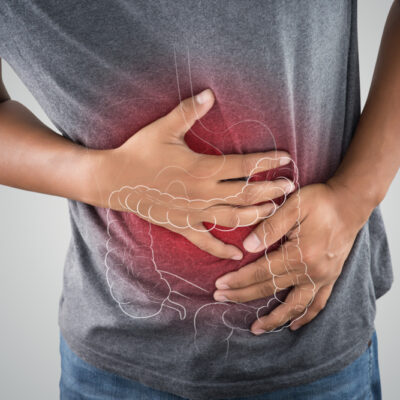
An Overview Of Colon Polyps
An overview of colon polyps Colon polyps are small clumps of cells formed on the lining of the colon. The majority of these polyps tend to be harmless, but with time, there are certain polyps that can easily grow into colon cancer. This is a serious condition, especially when found in the later stages. Almost any individual can develop colon polyps. People who are over 50 years of age are at an increased risk of suffering from this condition. Even smokers and overweight individuals or people with a family or personal history of colon polyps might be at an increased risk of suffering from this condition. Colon polyps – causes are slightly known, but this condition rarely causes any symptoms. Therefore, for individuals who are at risk of developing the condition, it is important to have screening tests on a regular basis. These will include a colonoscopy. Polyps found in the early stages can conveniently be removed. They can be removed completely in a very safe manner. Regular screening is the best step for the prevention of colon polyps. What are the colon polyps – causes? Doctors do not exactly know the causes of colon polyps, but they are of the view that polyps are a result of abnormal tissue growth. The human body develops healthy cells in a periodic manner, thus replacing the old cells that tend to be damaged or are no longer required. The division and growth of these new cells is regulated. However, there are cases when the new cells develop and then divide before they are actually needed. It is this excessive growth that results in polyps. Packaged red meat is also one of the most common colon polyps – causes. Fiber deficiency in the body. High-fat diet taken in excessive amounts. Smoking cigarettes. Obesity is also one of the major colon polyps – causes. Inherited conditions such as Gardener syndrome, familial adenomatous polyposis, and Peutz-Jeghers syndrome might also put an individual at an increased risk of having colon polyps. What signs and symptoms do colon polyps show? Majority of the individuals suffering from colon polyps do not show any symptoms. They are actually unaware of the fact that they have polyps, because they feel very well. Bleeding from the rectum is one of the most common symptoms of colon polyps. Blood in the stool can also be a sign of colon polyps. Blood might make stool look black, or there can be red streaks in stool. A feeling of tiredness due to anemia and not having sufficient iron in the body are common symptoms. It is the bleeding from the polyps that can result in an iron deficiency and anemia. Several other health issues might also result in these signs. Nevertheless, if rectum bleeding or blood in the stool are everyday phenomena, a consultation with a doctor is vital. How can colon polyps be prevented? Knowing the colon polyps – causes can help prevent the condition. However, there are other important steps that can be followed in trying to prevent this condition. They are as listed: Regular screenings. Lifestyle changes can also be of help in doing away with the colon polyps – causes, and, consequently, prevent them. Adopting healthy habits such as eating fruits, whole grains, and vegetables and reducing fat intake can help in the prevention of colon polyps. Limiting the intake of alcohol and quitting tobacco. Staying active physically and maintaining a healthy body weight is also important. When should one see a doctor? A general physician must be consulted in case of the following: Blood in the stool Abdominal pain Changes in bowel habits for more than a week It is important for one to have a word with their physician regarding their intake of vitamin D and calcium. This is because studies have proved that increasing the intake of food items rich in vitamin D and calcium can help prevent the recurrence of polyps. However, this is not completely clear. It is important to consider all the options, especially if one is at a very high risk of suffering from colon polyps.
Trending Articles
Featured Articles
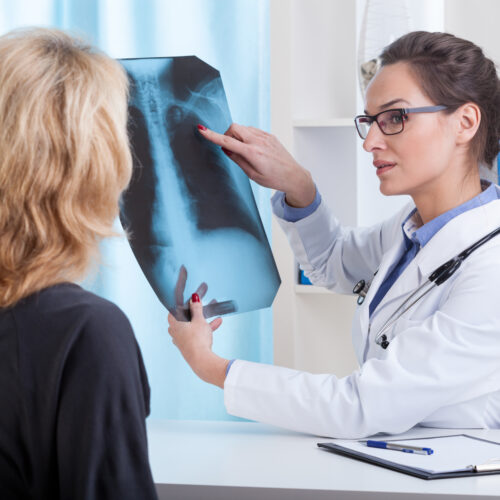
An Overview Of Chronic Hives
An overview of chronic hives Hives, also called urticaria, are an outbreak of pale and swollen plaques or red bumps on the skin. These are also called wheals on the skin and they tend to appear all of a sudden. Hives are either caused because of the body’s reaction to specific allergens or other unknown reasons. Generally, they cause itching and might also sting and burn. Hives can appear almost anywhere on the human body like the throat, lips, face, ears, and tongue. These red bumps on the skin vary in their size. They can be as small as an eraser and as large as a plate. They can even join together for forming large patches called plaques. Urticaria can last for several hours and even for days before fading. These itchy welts appear and fade repeatedly with the skin reaction running its course. This health condition becomes chronic hives when these plaques or bumps on the skin appear for over six weeks and keep re-occurring over months and even years. Most of the time the cause of this chronic condition is not very clear. However, the condition can be quite uncomfortable and can even interfere with regular activities and sleep. Anti-itch medicines and antihistamines tend to be good relievers for this condition. Below is some information about the symptoms of hives, its causes, and more. What are the symptoms of chronic urticaria? Viewing pictures of hives rash can help in knowing if you are suffering from hives. The signs and symptoms of chronic urticaria can last anywhere from a few minutes to several months and even years. While they generally resemble big bites, these welts can be very different in a number of ways. Some of the symptoms of chronic urticaria are: Welts varying in size and changing shape. These appear and fade on a repeated basis with the reaction running its course. Patches of skin-colored or red welts or wheals that appear almost anywhere on the human body. Painful inflammation or swelling of the eyelids, lips, and the interior of the throat. This is called angioedema. Severe itching A tendency of the symptoms and the signs flaring with triggers like exercise, stress, and heat. Pressing the center of the red bump makes it turn white, this is called blanching. The symptoms tend to persist for several months and to re-occur unpredictably and frequently, sometimes for months and even years. What are the causes of urticaria? The cause of chronic urticaria is difficult to determine and, in most cases, it might be impossible. However, there are cases where the main cause might be hepatitis, cancer, infection, or thyroid disease. The red bumps appear because of the condition and arise when specific cells release histamine and various other chemicals into the bloodstream of the sufferer. The pressure exerted on the skin by wearing a tight waistband or by anything else can also be the cause of urticaria. Foods like eggs, nuts, shellfish, and peanuts might trigger this condition. Pain medicines like ibuprofen, penicillin, and antibiotics can cause chronic urticaria. Bacterial infections like strep throat and urinary tract infections can cause chronic hives. Additionally, latex; pollen; pet dander; physical stimuli like cold, pressure, sun exposure, and heat; insect stings and bites; blood transfusions; certain plants like poison ivy and poison oak and viral infections like infectious mononucleosis, hepatitis, and the common cold can lead to hives. How to manage chronic urticaria? Avoiding known triggers is the best way to manage and treat chronic hives. Seeing an allergy specialist who can look for the triggers and suggest the right medicines can also help in preventing the condition. Cool compresses for relieving the itching can help in managing this condition. What are the medical treatments for urticaria? Medical treatments for hives include: Use of antihistamines for reducing itchiness Use of steroid tablets like prednisone Using calamine lotion Making use of diphenhydramine like Benadryl Visiting the dermatologist for persistent or severe urticaria might be recommended

Everything You Need To Know About Hives
Everything you need to know about hives If you have never experienced hives in your life, you might be shocked and alarmed to find your neckline and your face breaking out in flesh-colored or red welts. Even your kids might come home from school with an itchy rash all over their body. What do you do next? The things that most people do is that either they search online, call a friend, or consult a doctor in order to find out how to get rid of the condition fast. This health condition is also called urticaria and it mainly involves itchy red bumps appearing on the skin. These bumps range from being several inches to a few millimeters in diameter. Multiple bumps can appear to get connected and form large plaques on the skin. Majority of these welts go away in a day’s time with proper home treatment. However, there are some that can last for more than two days. These require immediate medical attention and a doctor’s consultation. Below is some information about hives to help you understand this health condition better. What are the different types of hives? Hives or urticaria falls into two main categories. The categories depend on the amount of time they have been present. Acute urticaria (ordinary hives) that resolve after six to eight weeks. Chronic urticaria continues longer than six to eight weeks. As hives are so common and ordinary hives, resolve spontaneously, generally, doctors do not spend too much time or expense in evaluating the cause of hives that last for less than eight weeks. Are itchy red bumps on the skin a cause for concern? Hives pictures depict that urticaria is nothing but a rash on the body. Despite the fact that these bumps are generally associated with certain allergic reactions, they can even be triggered by: Medicines Stress Underlying conditions like cancer and thyroid Insect stings and bites Cold temperatures Sunlight Infections Identifying the triggers is quite important. If you are able to determine the triggers for your rash, you will be able to avoid contact with the triggers and thus prevent more of these bumps from forming on your skin. When to seek immediate medical attention? These welts fade within a time span of 24 hours and do not necessarily require any kind of treatment. Nevertheless, seeking immediate medical attention is important if you are experiencing any of the following conditions: Difficulty breathing Dizziness Swelling in the face and throat These might be the symptoms of a chronic allergic reaction and require emergency medical care. What are the home remedies for treating urticaria? There are many people who use different home remedies for treating hives. Some of the most effective home remedies for treating hives include: Adding oatmeal to your bath. Soaking in an oatmeal bath helps in soothing the skin. Taking bath in an anti-itch solution like baking soda baths or oatmeal baths can reduce skin irritation. You can even add witch hazel to your bath. Cold compresses are also very effective in treating urticaria. The sufferer can apply a damp and cool cloth on the area that has been affected. This will offer relief from itching and even reduce swelling. Avoiding products that can cause skin irritation can also help in getting rid of hives. There are certain soaps that can dry out the skin and result in itching. Therefore, it is important to ensure that the sufferer uses a soap that is available for sensitive skin. Stay away from products that contain chemicals that can irritate your skin. Lotions and moisturizers that tend to irritate your skin should also be avoided. What are the natural remedies for urticaria? If the home remedies for the condition do not provide relief, then try different natural remedies given below: Prepare a mixture of witch hazel by using an astringent for maximizing the tannins found in this herb. The tannins in this herb are effective in relieving irritation. Aloe vera can also be used for healing skin irritation and inflammation.

Best Treatment Options To Get Rid Of Kidney Stones
Best treatment options to get rid of kidney stones Kidney stones are stubborn deposits that develop in the kidney that when small get out of the body by traveling through the urinary path. But this is just the case for very small stones. In case of slightly bigger kidney stones, the passing of a kidney stone through the urinary tract is quite painful. There are many kidney stone treatment options that one can adopt to get some relief. Most of the kidney stone cases are treated with either fluid therapy, medical intervention or pain medications. Additionally, there are various measures that one can adopt in order to reduce the chances of developing stones in the kidney. Kidney stones develop when salts and minerals especially calcium, oxalate, and uric acid crystallize and develop into hard deposits in the kidney. These stones are formed in the kidney but have the capability of affecting any part of the urinary tract. Kidney stones are also known as urolithiasis or calculi. Development of kidney stones is caused by dehydration in most of the cases. When the body suffers from dehydration, the fluid moves slowly through the kidney which further enhances the chances of salt and mineral compounds coming close to each other and finally sticking together. This guide will help you deal with your kidney stone treatment in a better way. What is the kidney stone treatment for small-sized stones? Smaller sized kidney stones do not require invasive treatments. They can be passed out of the body by the following: Drinking water – Drinking two to three liters of water a day might help the stone to get flushed out of the body. Pain relievers – Passing the stones out of the body might be discomforting. In such a case, the doctor might prescribe some pain relievers including acetaminophen, ibuprofen or naproxen sodium. Medical therapy – Your doctor might prescribe some medication to help the stone pass out of the body. This might include an alpha-blocker which works to relax the ureter muscles which further helps the kidney stone to easily pass out from the urinary tract. What are the kidney stone symptoms? The various kidney stone symptoms include the following: Painful and frequent urination Abnormal urine color Nausea Discharge of blood while urinating Vomiting Sudden pain that waxes and wanes in intensity. The common areas that get affected include the abdomen, genitals, the back, sides, and the groin. This pain is generally unbearable. What are the home remedies that can treat kidney stones? The various home remedies that can be adopted as kidney stone treatment are as follows: Water Lemon Juice Horsetail juice Kidney bean broth Celery Juice Basil Juice Wheatgrass juice Pomegranate juice Dandelion root juice Apple Cider Vinegar In short, staying hydrated is the key to move the kidney stone further in the urinary tract. The above mentioned drinks and remedies work towards the same goal. When should you see a doctor while suffering from a kidney stone? The kidney stone can be got rid of even without the intervention of a doctor. Staying hydrated can help the stone move out of the body in case the stone size is small. However, you must go and see a doctor if the kidney stone does not pass out of your body in around 6 weeks or you start developing severe symptoms that include the following: nausea blood in your urine chills vomiting severe pain in the abdominal and urinary tract region fever The specialist that you consult will determine how and what kind of medication or therapy would be apt for you and your condition. The kidney stone size determines as to what kind of treatment would suit the patient.

Identification And Treatment Of Kidney Stones
Identification and treatment of kidney stones A kidney stone is formed when there is a gradual buildup of material in the kidney through substances in the urine. It has a plethora of causes and can affect any part of the urinary tract from the kidneys to the bladder. The stones can be as small as grains of sand or as big as pearls. Most kidney stones pass out of the body without needing a doctor’s help while some require surgery, as they get stuck in the urinary tract and cause a lot of pain. In this article, you can find out more about the causes of kidney stones, symptoms, kidney stones treatment options, and home remedies. What causes kidney stones? Kidney stones are formed when the concentration of crystal forming minerals such as calcium,oxalate, and uric acid is higher than the fluid content making it easy for the crystals to stick together and form stones. Some reasons why you may be more likely to have kidney stones are: Inadequate intake of water – Our body requires an adequate amount of water to dilute uric acid. In its absence, the urine becomes more acidic and contributes to the formation of kidney stones. Diet – Intake of high-oxalate foods such as spinach, rhubarb, grits, and bran cereal increase the risk of developing kidney stones. Sodium – Found in salt, it can cause several types of kidney stones. Therefore, limit your intake of salty snacks, canned foods, processed foods, and packaged meats. Hypercalciuria – It is a condition when there is high calcium in the urine, which may form calcium oxalate or calcium phosphate kidney stones. Gut Problems – Those with gut problems are more prone to developing kidney stones. Obesity – Obesity is another causal factor of kidney stones. Heredity – Some families have a history of developing kidney stones. Medications – Medications, such as diuretics, anti-seizure drugs, and calcium-based antacids, also increase one’s risk of developing kidney stones. Chronic diseases – Diabetes, hypertension, and other chronic diseases are known to increase the risk of developing kidney stones. What are the symptoms of kidney stones? The following are the symptoms knowing which can help you get the ideal and on-time kidney stones treatment – Urinary urgency – Feeling the need to pee more often than normal is termed as urinary urgency, which is one of the symptoms of kidney stones. It indicates that the stone has moved down into the lower part of the urinary tract. Painful and burning sensation – When you start feeling pain and a burning sensation while urinating, it means the kidney stone has reached the junction between the bladder and ureter. Back, belly, or side pain – The pain occurs when the stone gets stuck in the narrow ureter and is often unbearable. The pain starts suddenly and changes location and intensity as the stone moves. Large stones are usually more painful than small stones but even a small stone can cause a big blockage and pain. Blood in the urine – It’s a common symptom in those suffering from urinary tract stones. The blood can be brown, pink, or red in color and sometimes can be difficult to see without a microscope. Cloudy or smelly urine – Cloudy or foul-smelling urine can be a sign of an infection in the kidneys or kidney stones. Fever and Chills – They are indicative of a urinary tract infection and kidney stones. What are some home remedies for dissolving kidney stones? If you are wondering how to dissolve kidney stones, the following home remedies can help – Dandelion root Kidney beans Horsetail Pomegranate juice Organic celery Basil Apple cider vinegar What are the treatment options for kidney stones? The treatment for kidney stones depends on the severity and the size of the stones – Large stones – Extracorporeal shock wave lithotripsy (ESWL) is a treatment wherein sound waves are used for breaking stones into tiny pieces, which can then be excreted through the urine. Several surgeries are also performed to remove large stones from the kidney. Small Stones – Patients with small stones are usually advised to increase their intake of water and fluid. As even small stones can cause pain while passing, doctors recommended some mild pain relievers. Doctors also prescribe some medications that make stones pass more quickly and less painfully. How can you prevent kidney stones? Stay hydrated Take less sodium Avoid high doses of vitamin C supplements Eat less animal protein Eat fewer oxalate-rich foods

How Can You Control The Symptoms Of Liver Damage
How can you control the symptoms of liver damage? The liver is an integral part of a human body. It is located just under the rib cage on the right side of the abdomen. The liver helps in digestion and removes toxins from the body. It filters out all the blood coming out of the digestive tract before it goes to the rest of the body. It also makes proteins that are significant for blood clotting as well as other functions. It is the storehouse of glycogen, minerals, and vitamins. Any damage or harm done to the can cause fatal reactions. In this article you will find out more about the symptoms of liver damage, its causes and cures. What are the reasons for liver malfunction? Infection: Often virus and parasites affect the liver and cause its inflammation. These viruses spread through semen or blood, through contaminated water and food. They can also affect you if you are in close contact with a person who is infected. Some of the most common hepatitis viruses are- Hepatitis A, Hepatitis B, Hepatitis C. Autoimmune disease- There are certain diseases that affect the system that can also affect the liver such as Primary biliary cirrhosis, Primary sclerosing cholangitis, and Autoimmune hepatitis. Genetics- Sometimes an abnormal gene that is inherited from either or both the parents can cause some substances to build up in the liver that could damage it such as Oxalosis, Wilson’s disease, Hemochromatosis, Hyperoxaluria, and Alpha-1 antitrypsin deficiency. Cancer- Cancer to is a cause for liver damage and can lead to liver cancer, bile duct cancer, and liver adenoma. Excessive alcohol intake can also induce liver damage. Fat accumulating in the liver can result in liver malfunction. What are the various liver damage- symptoms? The 10 signs of liver damage include: Skin and eyes appear yellowish, which is a sign of jaundice Abdominal pain and swelling Itchy skin Dark urine color Swollen legs and ankles Extreme fatigue Nausea or vomiting Pale colored stool, or bloody stool Loss of appetite A tendency to get bruises easily How to control the symptoms of liver damage? Once you know the signs of liver damage you can keep a lookout for it and in fact prevent it by taking the following precautions: Drink alcohol moderately- For adults it is recommended that you drink no more than one drink a day for women and two for men. Avoid drugs- It is risky to take illicit intravenous drugs. Also, never share needles being used to inject drugs. Be picky about the cleanliness and hygiene when getting body piercing done. Use a condom while having sex. Get vaccinated against hepatitis A and hepatitis B. Avoid contact with people who have hepatitis as it is contagious. It can spread through accidental needle pricks or if the blood or body fluids have not be washed properly. Use gloves while using any toxic liquid like insecticides. Maintain your weight as obesity can lead to non-alcoholic fatty liver disease. How do you diagnose a liver disease? A doctor is likely to check for any of the liver damage symptoms and also look at the person’s health history, after which they will to do a physical examination. Based on the results he/she might suggest the following: Blood Tests- Liver function tests are done to find out the working of the liver. They are a group of blood tests that look for specific liver and genetic issues. Imaging tests- The patient might have to undergo a CT scan, ultrasound, or an MRI to know the extent of liver damage. Tissue analysis- A tissue from the liver is removed to diagnose the extent and also signs of liver damage. What is the cure? The treatment for a liver disease would depend on its diagnosis. Some mild liver problems can be treated simply by altering lifestyle like losing weight or stopping alcohol intake. However, other grave issues might need medical intervention. Alternate treatments- Some studies show that Chinese herbal medicine treatments work well in curing hepatitis B. Liver transplant- If the liver damage is irrecoverable then a transplant is required, wherein the patient’s liver is fully or partially replaced with the liver of a healthy person. You must see a doctor if your symptoms persist for a prolonged period of time and you experience one or more of the above mentioned symptoms.

Helicobacter Pylori (H. Pylori) Infection – An Overview
Helicobacter pylori (H. pylori) infection – An overview H. pylori can be described as a common bacteria found in the human digestive tract. These have the tendency of attacking the lining of the stomach. These bacteria are the main reason for stomach infections. Typically speaking, H. pylori infections do not tend to be harmful, but they are responsible for ulcers in the small intestine and the stomach. “H” in the name of the infection refers to Helicobacter. Here, the meaning of “Helico” is spiral, indicating the fact that the shape of the bacteria is spiral. These bacteria generally infect the stomach during childhood. There are no typical H Pylori infection – symptoms, but the infection itself can result in diseases such as inflammatory conditions, peptic ulcers, and gastritis. How do the H. pylori bacteria cause stomach problems? H. pylori bacteria have the tendency of living in the acidic and harsh environments of the human stomach. They can easily change the stomach environment and reduce the acidity for survival. It is their spiral shape that gives them the scope of penetrating the stomach lining. Once in the stomach lining, they remain mucus protected, and the immune cells of the body cannot reach them. They can disturb the immune response of an individual, resulting in stomach problems. What are the main symptoms of H. pylori infection? The H pylori infection symptoms include the following: Nausea Appetite loss A burning sensation or pain in the abdomen Bloating Frequent burping Abdominal pain when the stomach is empty Unexplained loss of weight Many individuals will not have H pylori infection – symptoms. However, people might be born with resistance to the harmful effects of these bacteria. People with ulcers due to the infection might experience the following symptoms, in which case a doctor needs to be consulted immediately: A burning pain in the belly Feeling dull Fever Heartburn Anemia Trouble swallowing Blood in the stool What are the causes of H. pylori infection? How the H. pylori bacteria actually infect people is a question that has not yet been answered. These bacteria might get passed on from one individual to another through direct contact by way of vomit, fecal matter, or saliva. These bacteria might also spread through infected water and food. What are the risk factors for the infection? The H. pylori infection is generally contracted during childhood. The risk factors for this condition are mostly related to living conditions during one’s childhood. They are: Living in areas that are very crowded Living without the supply of reliably clean water Living with individuals who are already suffering from the infection When should you consult a doctor? A doctor should be consulted immediately if the following H pylori infection – symptoms do not seem to go away: Bloody vomit or vomit that appears very similar to coffee grounds Severe pain in the abdomen Bloody or black stool or stool that looks similar to tar Lasting pain or gnawing in the area under the ribs. The pain must improve after drinking milk, after eating, or after taking different antacids. How can the H. pylori infection be prevented? Screening for H. pylori bacteria would be the first and final step of preventing the infection. Staying away from infected individuals and living in clean environments can help in preventing the infection. Washing hands thoroughly before eating and drinking water from a safe source can help. Eating hygienically prepared food can also aid the prevention procedure. How is the H. pylori infection treated? Antibiotics are the main treatment for the infection. Doctors also prescribe acid-suppressing medicines and antacids for blocking or neutralizing the production of stomach acids. Following a regular food intake schedule can also help in soothing the abdominal pain experienced due to the infection. How is the infection diagnosed? The H. pylori infection is diagnosed by: Breath tests Blood tests Biopsy of the stomach lining called endoscopy Stool tests It is important for people to have an idea of the H Pylori infection – symptoms in order to get it treated in the right manner.

Everything You Need To Know About The Flu
Everything you need to know about the flu Flu is a common viral infection that can affect anyone. In some cases, the flu can be deadly. It is often mistaken as other health conditions because of the symptoms it exhibits. Flu is contagious. Every person is affected by the flu at least once in their life. It is important to understand the symptoms of the flu so that you can take care of yourself or anyone who is affected. Flu can be referred to as influenza. It is caused by viruses that infect the respiratory tract. The incubation period for flu can last for 1 or 4 days. The symptoms may last even up to 14 days and longer if not treated. It can be spread both directly and indirectly. Airborne droplets can spread it from one person to another because of coughing or sneezing. It can also spread indirectly when a person comes in contact with a contaminated surface. What are the types of flu? Although a common ailment, there is a lot of misconception about what flu is and isn’t. There are several different types of flu. Some types of flu include: Seasonal flu – Typically causing illnesses for a few months out of a year, seasonal flu months are called the flu season. October to April is the flu season in the country. However, flu season varies according to where you are in the world. Seasonal flu is caused by three types of flu viruses, namely, type A, B, and C. Usually, type A influenza is responsible for the majority of seasonal flu cases. Found in both human beings and animals, type A influenza spreads from one person to another by a person who is already infected. Influenza A has different varieties that are classified into subtypes, H and N. Type B influenza is found only in human beings and has the potential of being extremely dangerous. However, it does cause epidemics. Type C influenza affects only human beings, but it is much milder than type A and B. Typically, it causes mild respiratory ailments. Flu pandemic – Any type of flu virus has the potential to become a flu pandemic. During a flu pandemic, in a short span of time, there is a mass outbreak of ailments in human beings around the world. Some flu pandemics, such as the 918 flu pandemic, have caused a very serious ailment and killed millions. H1N1 (swine flu) – During spring of 2009, a new influenza A virus, H1N1 (swine flu) was found in Mexico. Quickly it spread throughout North Amera, the United States of America, and all over the world. Swine flu is a combination of bird, human, and swine flu. H5N1 (bird flu) – The strain of influenza known as avian or bird flu, as the name suggests, H5N1 is typically transmitted between birds; however, it can also be passed from birds to human beings. This virus does not spread from person to person. When it infects a human being, H5N1 is associated with a serious ailment, multi-organ failure, as well as high death rate. What are the early symptoms and signs of the flu? Noticing the early signs and symptoms of the flu can prevent the spread of the virus and it may also help treat the illness before it takes a turn for worse. Some early signs and symptoms of the flu to look out for are: Excessive or sudden fatigue Chills and body aches A persistent cough A sore throat Fever Gastrointestinal problems (vomiting, stomach ache, diarrhea, or nausea) What are the treatment options for the flu? Often, flu can be treated by getting plenty of rest and staying hydrated. However, in certain cases of flu, the doctor may prescribe antiviral medicines like oseltamivir (Tamiflu) or zanamivir (Relenza). These medicines have the potential to shorten the length of the illness if taken as soon as one notices the symptoms and signs of flu. For treating symptoms associated with the flu like headaches and body aches, one may take painkillers. However, it is best to take advice from the doctor instead of self-medicating. What are some home remedies for the flu? There are several ways in which the flu can be treated at home. If continued over a few days, they can help you get back on your feet. Here is a list of home remedies that can help with the flu symptoms: Chicken soup – This is the number one suggestion given by doctors as it has all the nutrition and warmth that can help one get healthy soon. It can also reduce the symptoms of flu and keep one hydrated. Ginger – This root has been recognized for its medicinal benefits for centuries. A few slices of ginger in boiling water can cure a sore throat and cold in no time, which are the symptoms of the flu. Honey – Honey has both antimicrobial and antibacterial properties. Having lemon and honey in water can reduce the throat pain caused by influenza. This flu treatment is very effective for children. Probiotics – Probiotics are friendly bacteria that can be found in certain foods and in the body itself. They help keep the immune system strong and keep the flu at bay. Other remedies – Other home treatments for flu include having garlic, salt water gargling, massaging with a vapor rub, and taking a warm bath.

Head And Neck Cancer Treatment Options In The Country
Head and neck cancer treatment options in the country Most cancers of the head and neck are curable if they are caught at an early stage. Apart from eliminating cancer, which is the primary goal, preserving the functionalities of the nearby organs, nerves, tissues, and glands are also very important. Doctors, when planning the head and neck cancer – treatment, consider all the facets that might affect a patient’s quality of life, such as how the person feels, talks, eats, breathes, etc. In this article, we will discuss the different options that are available for head and neck cancer – treatment. What all does a doctor take into consideration when planning for treatment? While making plans for treatment, patients are also encouraged to consider a clinical trial to check whether it works, which includes testing with different types of medication, a combination of standard treatment methods and medicines, or other treatments. Moreover, doctors want to learn whether the new treatment methods are safe and more effective than the standard ones. For this purpose, doctors usually form a multidisciplinary team to make an effective evaluation process before starting any treatment. What is the cancer care team? Head and neck cancer – treatment by cancer care specialists provides care for the patients and studies the treatment methods that are suitable for the patients. The team includes several specialists, as follows: Medical oncologist : Medical specialists who use chemotherapy and targeted therapy for treating cancer. Radiation oncologist : Medical specialists who use radiation therapy for treating cancer. Surgical oncologist : Doctors specialized in treating cancer using surgical methods. Reconstructive/plastic surgeon : Medical specialists who are experts in repairing damage caused by cancer treatment through reconstructive surgical methods. Maxillofacial prosthodontist : A doctor who is specialized in restorative surgery in the head and neck areas. Otolaryngologist : A doctor who is specialized in ear, nose, and throat. The oncologic dentist or oral oncologist : Dentists expertized in caring for patients with head and neck cancer. Physical therapist : A medical professional who helps patients recover their physical strength and mobility. Audiologist : A medical professional who treats and manages problems related to audio and speech. Psychologist : Mental healthcare professionals who take care of the emotional, psychological, and behavioral needs of the patient and their families. The cancer care team also includes a variety of other medical professionals, such as physician assistants, oncology nurses, pharmacists, counselors who create a comprehensive treatment plan before the actual treatment begins. What are the factors that may affect the treatment plan? Treatment options, plans, and recommendations depend on several factors, which include the following: The type of head and neck cancer The stage of head and neck cancer The possible side effects The patient’s overall health and medical condition What are the best treatment methods for head and neck cancer – treatment? Overall, the main treatment options for head and neck cancer – treatment are surgery, radiation therapy, chemotherapy, and targeted therapy. A patient’s treatment plan may include surgery or radiation therapy or a combination of different methods along with different medications. Surgery : The main motive of head and neck cancer – treatment with surgery is to remove the cancerous cells and some part of the surrounding healthy tissue. There are 4 main types of head and neck cancer – treatment surgeries: laser technology, excision, lymph node or neck dissection, and reconstructive or plastic surgery. Some people may require more than one operation to remove cancerous cells, which depends on the location, stage, and type of cancer. Moreover, it is often difficult to remove cancer completely, and there comes the requirement of additional treatments, which may include radiation therapy or chemotherapy to destroy the cancerous cells that cannot be removed by surgery. Radiation therapy : Radiation therapy is used to destroy cancer cells with the use of high energy x-rays or other particles. A radiation therapy plan usually consists of a specific number of treatments given over a set period of time. The two most common types of radiation therapy are external-beam radiation therapy and internal radiation therapy. Chemotherapy : Chemotherapy is the use of different medicines and drugs to destroy cancer cells and prevent the ability of cancer cells to grow and multiply. A chemotherapy schedule is a specific number of cycles over a set period of time. Targeted therapy : The main goal of targeted therapy used for head and neck cancer – treatment is to block the growth and spread of cancer cells while causing less damage to the healthy cells. In this type of treatment, cancer-specific genes, proteins or the tissue environment is targeted that is responsible for cancer growth and survival. While some of the world’s best treatment options are available in the country, what a doctor finds suitable for a particular type of cancer is completely dependent on their expert analysis, and it is best to trust them.
